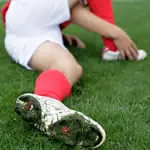
Many parents of young athletes will face this issue. Most will spend weeks or even months trying to figure it out. The hope is that after reading this article it will be completely clear and your worries will subside.
My child's heels are killing him.
Don't worry, many have been there. While working on the training series SoccerU, we often dealt with many young players with this issue. Many times they simply have to stop playing or sit out because the pain gets so bad.
At what age does this happen?
It generally occurs in male athletes between the ages of 9 and 14. Yes, it happens in female athletes as well, but is not as common.
What causes it?
It is called Sever's Disease.
Children's heel pain differs from the most common form of heel pain experienced by adults (plantar fasciitis) in the way pain occurs. Plantar fascia pain is intense when getting out of bed in the morning or after sitting for long periods, and then it subsides after walking around a bit. Children's heel pain usually doesn't improve in this manner. In fact, walking around typically makes the pain worse.
Heel pain is very common in children because of the very nature of their growing feet. In children, the heel bone (the calcaneus) is not yet fully developed until age 14 or older. Until then, new bone is forming at the growth plate (the apophysis), a weak area located at the back of the heel. Too much stress on the growth plate is the most common cause of pediatric heel pain.
In simple, non-medical terms, there is a growth plate in the heel of the foot. It is connected to the Achilles tendon. When children are at this age they often have growth spurts and these growth spurts cause tension to form from the calves and Achilles tendon. As the child runs and jumps it essentially causes "pounding" on the heel and bone, it is irritated. In other words, the tension from the growing muscles exposes the bones in the heel to more impact. This pain can be extreme or simply mild.
How do I treat it and cure it?
You can't cure it. The only way to cure it is time. Eventually as the child matures and passes through the growth cycles the pain will go away. You can however help the pain and here are some dos and don'ts.
-There are several "stretching" devices that can be worn at night. A lot of children won't wear them because they are uncomfortable and many times cause blood circulation loss (foot going to sleep). For the money, I would avoid these.
-Stretching the calves and Achilles tendon will help slightly. Keeping the feet flat on the ground, lean forward toward a wall until the stretch is felt. Hold it for 30 seconds, release and repeat. This can be done three times a day (great while watching the TV). Try doing one foot at a time and make sure the stretch is felt in the Achilles and not the knee area.
-Reducing jumping and stride running. Stride running would be "laps" where our heel hits the ground first. This is different from sprinting where the ball of our foot absorbs most of the impact. Sports like basketball or shooting hoops for hours on end outside will greatly increase the pain.
-New rule in the house. No bare feet ever. From the time they get out of bed they must wear something that helps absorb the impact. Foam flip flops are fine. At least there is a layer between the floor and the heel.
-Gel heel pads. You can buy soft gel heel pads at any sporting good store. I have found that women's sizes fit young male players' shoes well. You want soft gel pads. Not firm support pads. These have helped about 50 percent of the pain.
-Many try icing the heels and it seems to help some. It seems to help more when it is done shortly after activities. This will relieve some of the pain but not really help cure it.
The best solution I have found is to first understand it, and then accept the fact you can't cure it. Limiting things such as "pick-up games" on the weekends will help them get ready for and bare training sessions during the week. I know this is hard, but it is a give and take.
It is unfortunate that this pain comes at a critical time in a player's development. Hopefully explaining it to the child and having them get involved with it will be one of the best things to help deal with it.
 See more soccer tips for kids or find a youth soccer leagues near you.
See more soccer tips for kids or find a youth soccer leagues near you.
Coach V is the founder and developer of the Blast The Ball soccer training system and the SoccerU training series. He currently works with all levels of players including youth, collegiate and professionals.
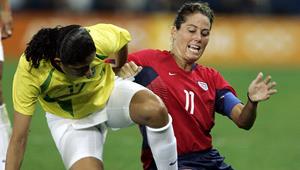

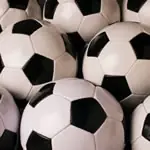
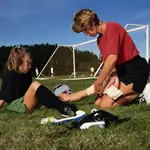
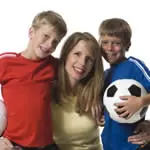
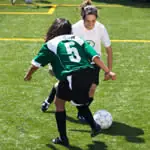
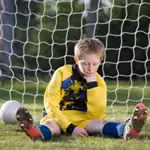
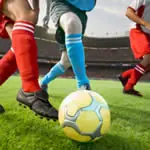
Discuss This Article